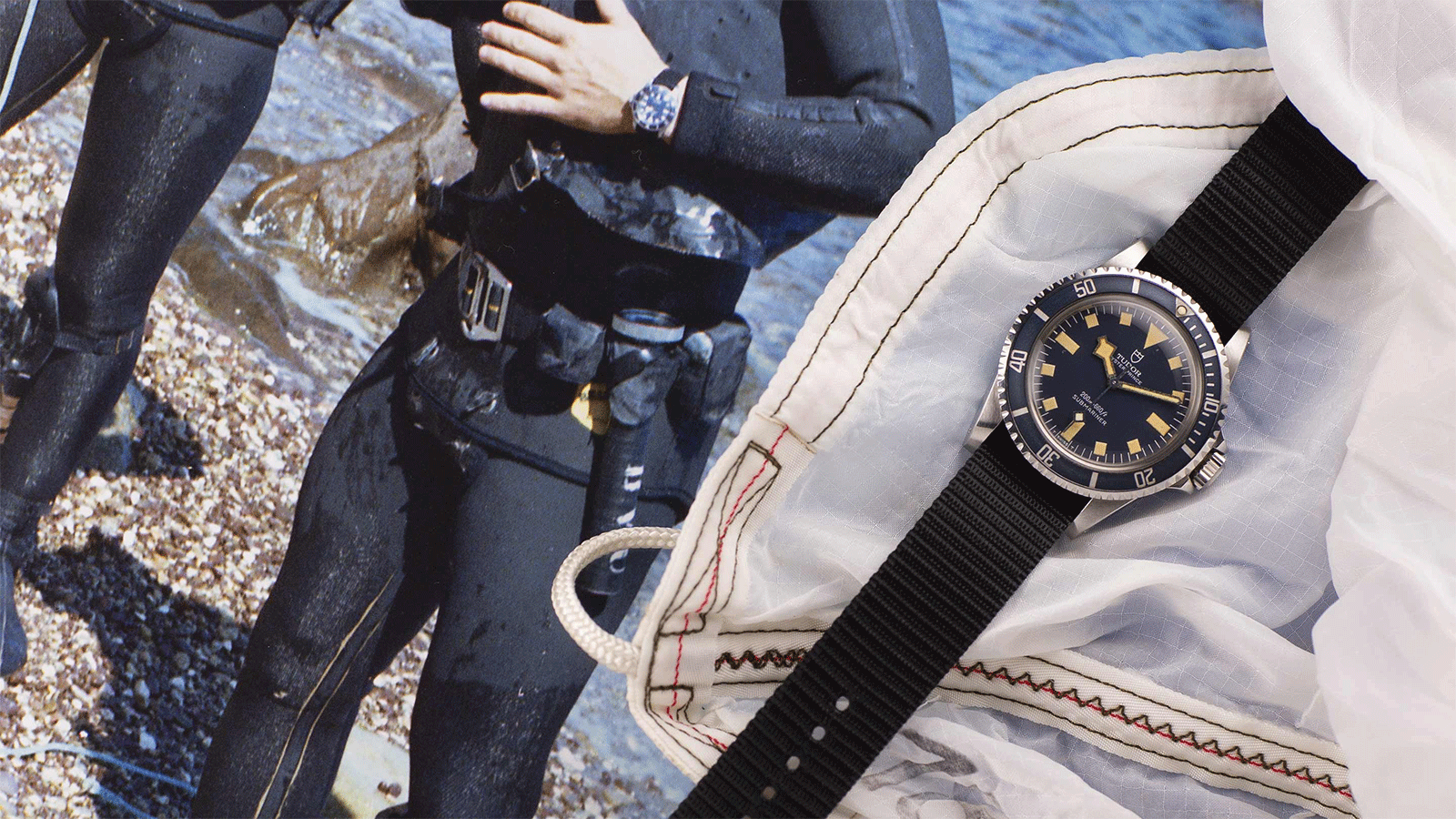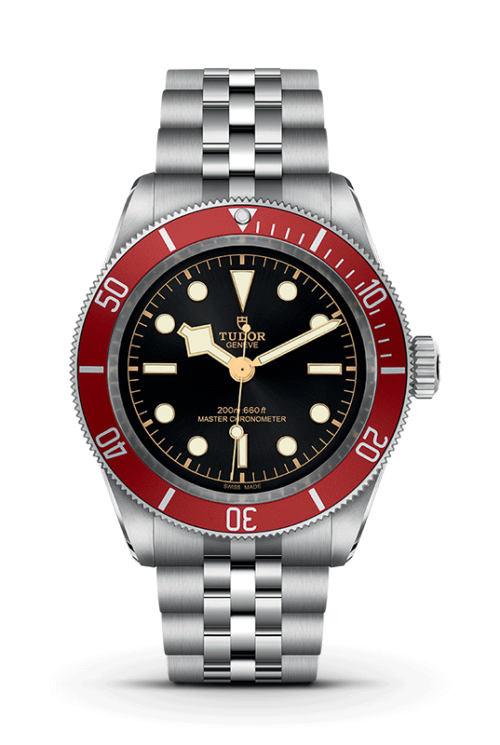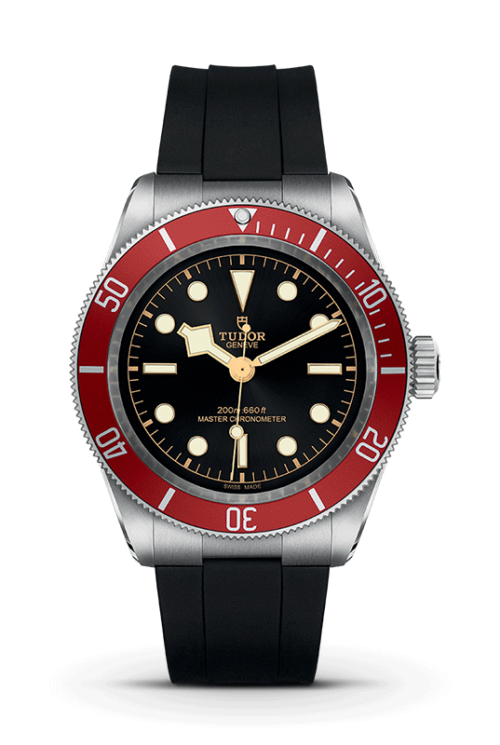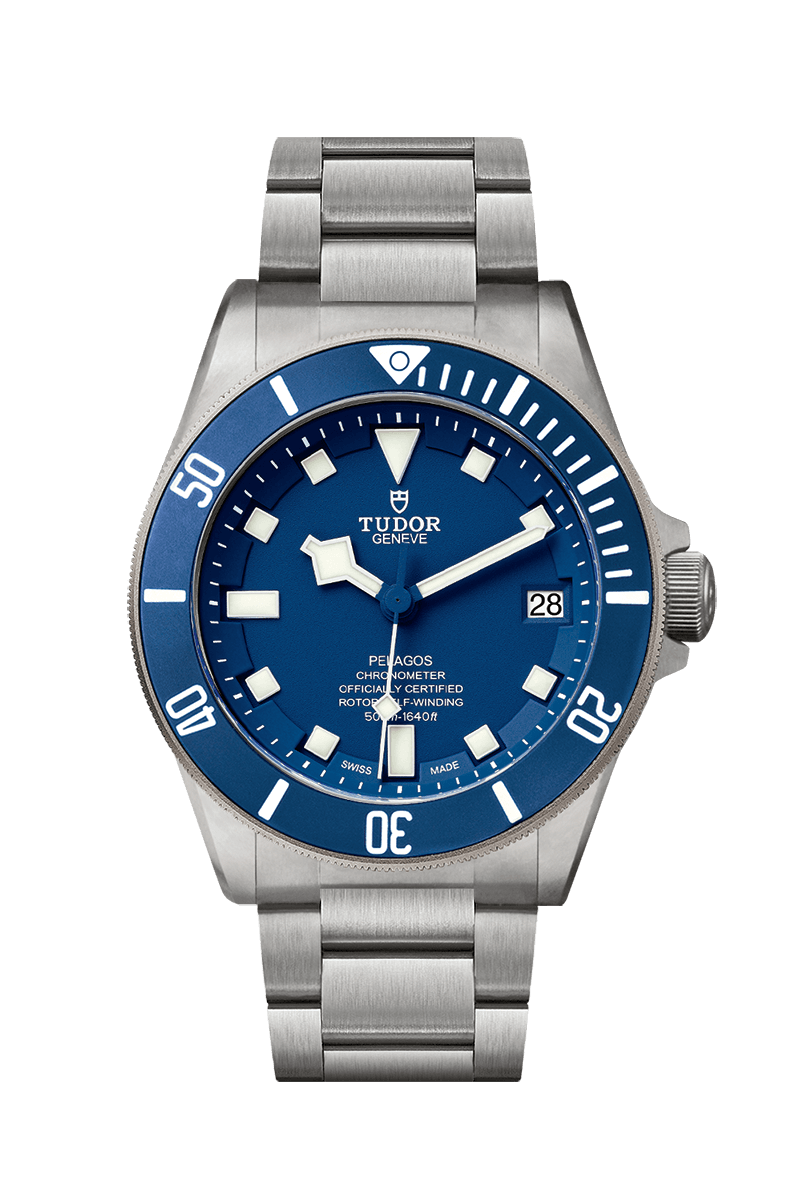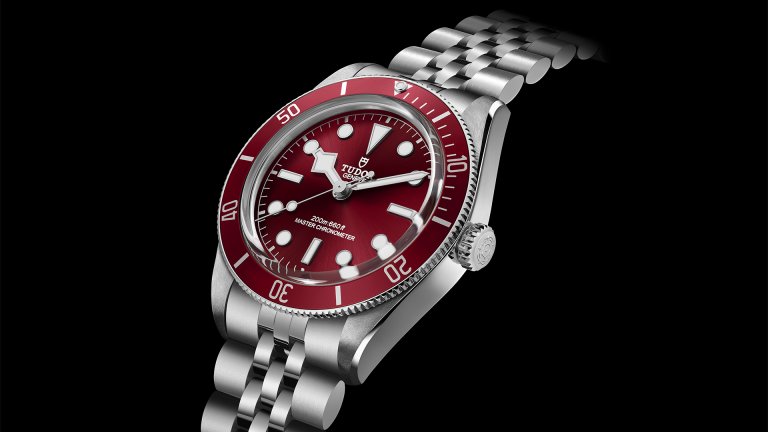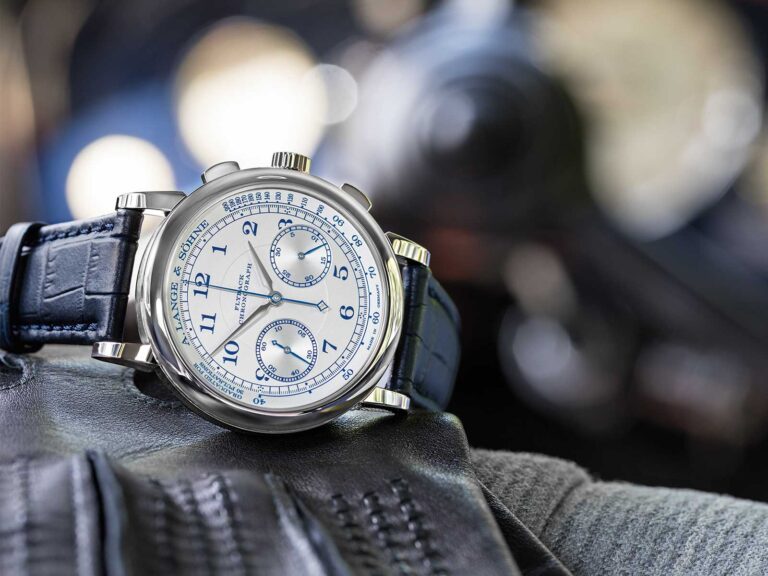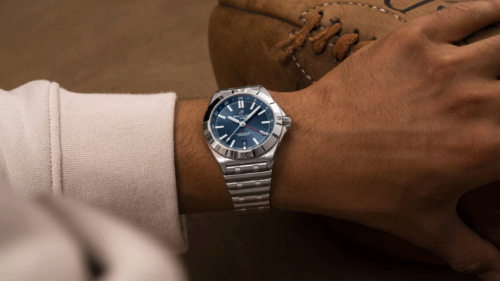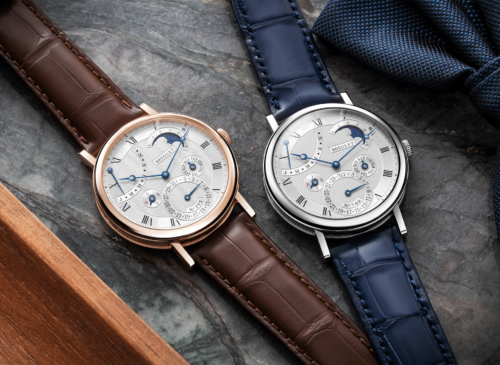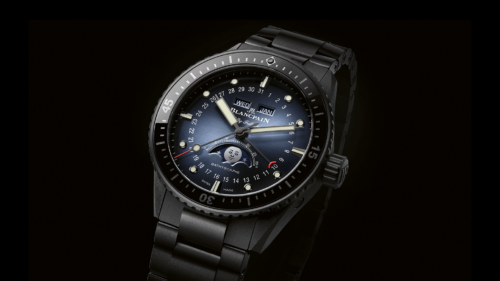The TUDOR Black Bay vs. The TUDOR Pelagos: Choosing the Ultimate Dive Watch
In the world of Swiss watchmaking, TUDOR stands as a brand renowned for its rich heritage and impeccable craftsmanship. Nowhere is this more apparent than in the brand’s popular dive watch collections; the Black Bay and the Pelagos. To the novice, these models may seem almost interchangeable, and whilst it’s true oath embody TUDOR’s commitment to quality and precision, each collection caters to distinctively different tastes and preferences. The Black Bay exudes a vintage charm, drawing inspiration from Tudor’s diving heritage, whereas the Pelagos stands as a testament to modernity with its technical prowess and innovative materials. Join us as we embark on a journey to dissect the nuances between these two remarkable lineages, exploring their similarities and differences in design, functionality, and character.
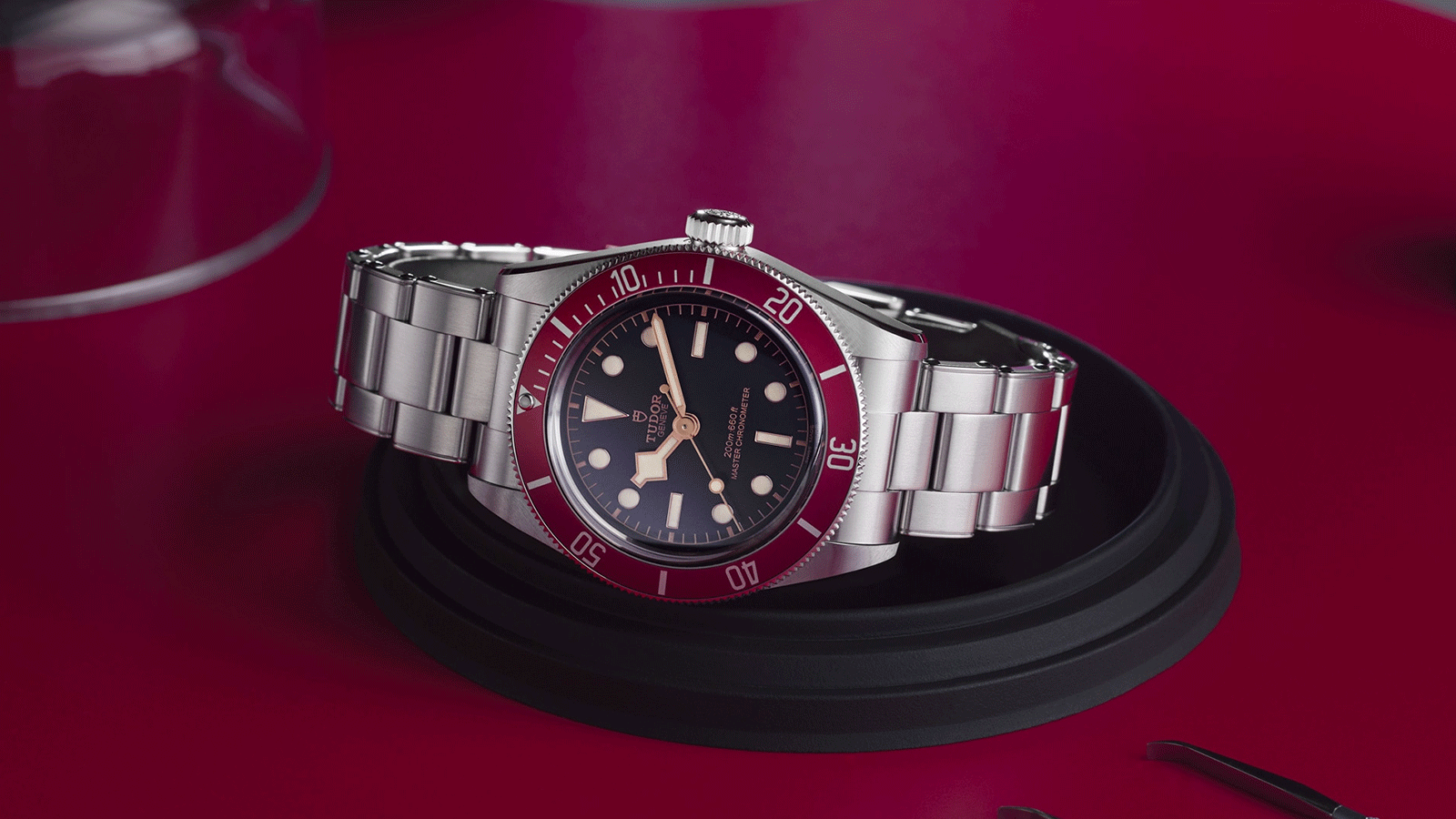
Origin Story: The TUDOR Black Bay
Since the 1950s, TUDOR has been producing some of the best value-for-money mechanical dive watches on the market. It’s no secret that in those critical early years, it benefited enormously from its access to and association with elder sibling ROLEX, with a prime example being the launch of the TUDOR Oyster Prince in 1952. This model featured both a waterproof Oyster case and a self-winding Perpetual ’rotor’ mechanism, two innovations pioneered by and formerly for the exclusive use of ROLEX. Two years later, the iconic Oyster Prince Submariner followed, drawing favorable comparisons with its elder sibling, the Rolex Submariner. As the decade rolled on, however, TUDOR began to establish itself as a standalone maker of reliable yet accessibly priced tool watches (just as founder Hans Wilsdorf had envisioned).
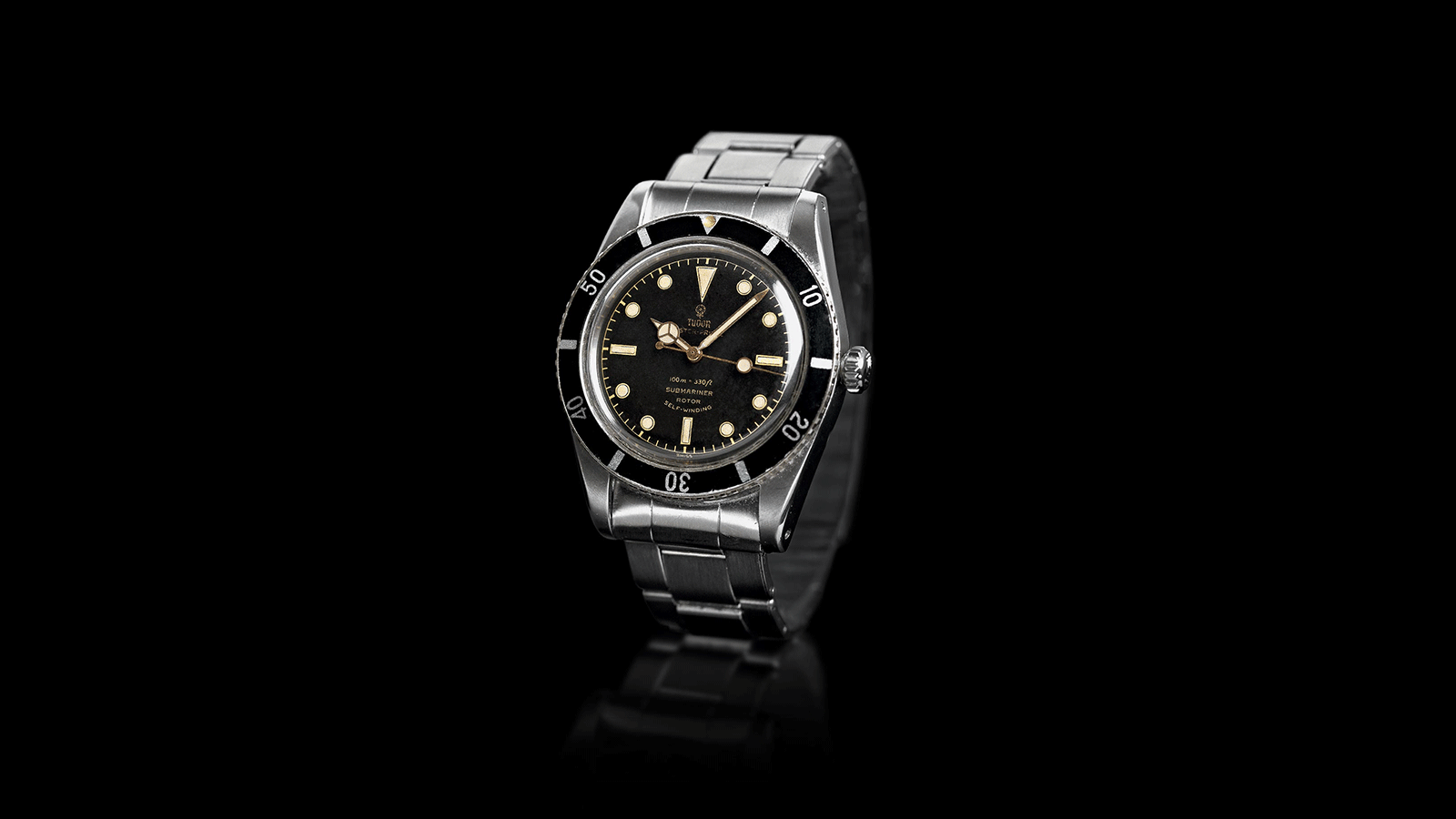
The modern TUDOR Black Bay collection pays homage to this exciting and important chapter in the brand’s history. Making its debut in 2012 as part of the broader TUDOR revival, the Black Bay collection draws heavily from past TUDOR classics from the 1950s and 1960s, starting with the very first Submariner, Reference 7922, from 1954. From this model, the Black Bay draws inspiration for its dial, right down to the colour – black – which was selected for its legibility underwater. Set against the dark surface is the instantly recognisable arrangement of luminescent index shapes shared with the ROLEX Submariner. A large, upside-down triangle at 12 o’clock, and circular hour markers interspersed with rectangular – baton-shaped – markers at the 3, 6, and 9 positions. Immediately legible in all conditions, there is a reason this design has remained largely unchanged for 70 years.
Around the periphery runs the minute track boarded by a complete circle. A subtle detail is the thickening of paint at each 5-minute interval. The coin-edge, rotating bezel with 60-minute counter was also present from the start. Numerated for 10s, marked for 5s, and a second upside-down triangle, this time with a luminescent dot, to indicate 0/60.
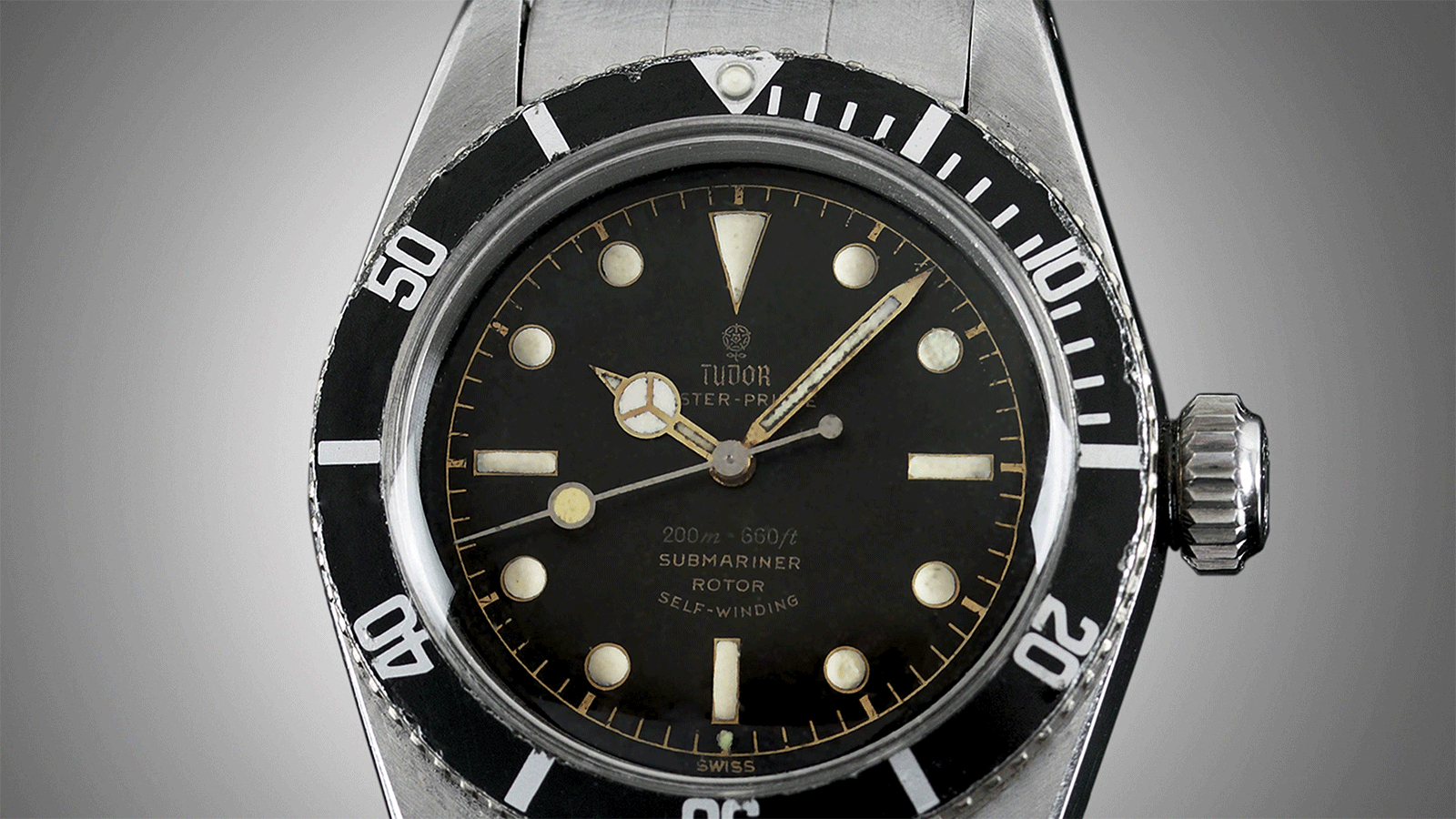
The next big influencer on the Black Bay is the reference 7924, launched in 1958 and since nicknamed the “Big Crown” by collectors. As you might have guessed already, the Ref 7924 is significant thanks to its oversized, unprotected crown, which is a key feature on all modern Black Bays. Thanks to this larger crown, the Ref 7924 was the first Submariner to be waterproof to 200m (20 bar/ 660ft). This was also made possible by a new Tropic-type Plexiglas crystal. It was thicker than previous versions and dome-shaped (for better resistance to water pressure). Today a domed sapphire crystal is standard on just about all Black Bays. Lastly, the hash marks on the bezel marking out the minutes between 0 – 15, were also introduced on the Ref 7924.
The remaining features for the Black Bay come from the 1969 references, 7016 and 7021. This includes the distinctive, square-shaped hands known by collectors as “snowflakes”. These uniquely styled hands have become a key part of the Black Bay’s identity, whilst also serving a functional purpose, ensuring optimal legibility in all conditions. These later references also debuted TUDOR’s new shield logo a symbol of resistance and reliability.

Origin Story: The TUDOR Pelagos
In contrast, the TUDOR Pelagos looks every bit like the modern, utilitarian tool watch that it is, without so much of a hint of the vintage aesthetic with which the Black Bay collection is imbued. Which is why some people assume that it is devoid of any direct connection to TUDOR’s rich dive watch history. Yet this is not the case at all. Rather, the design of the Pelagos subtly adopts several key characteristics from a group of TUDOR Submariners that appeared between 1967 and 1975.
It starts with the reference 7928 from 1967. On this model, the circle bordering the minute track disappeared. And each graduation extended to the flange. The design of the Pelagos minute track is similar. The difference is that it has a sunken dial, so the graduations are now at a taper. Then in 1969, the eight circular hour markers became square. Reference 7016 and 7021 stand out from other Submariners due to this unique detail. The new face contributed to the Tudor identity and today lives on in the Pelagos. Reference 7021 also introduced a date window at 3 o’clock. Another feature found on the Pelagos.
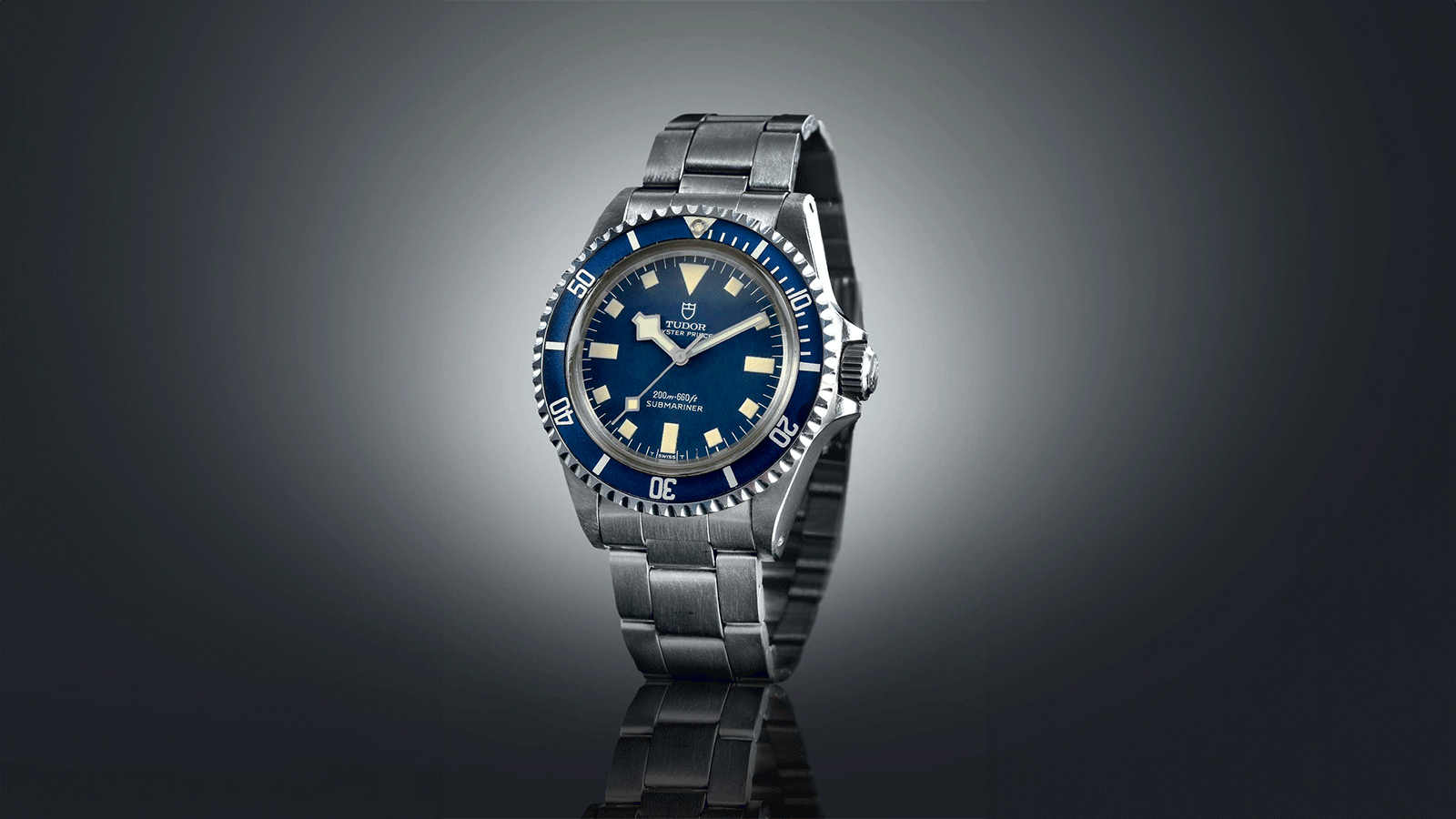
A third reference with square hours markers appeared in 1975. (Before the circular indexes made a return.) Reference 9401/0 is important for introducing colour. Dials and bezels came in blue, as well as black, which is why today’s core Pelagos models also come in these two traditional dive watch colours. Unlike the Black Bay collection though, the Pelagos is not meant to look vintage. Instead, it presents the aesthetic of the Submariner as it was brand new. Its mono-colour dials and bezels feature crisp white accents and lume. (With the LHD version being an obvious and deliberate exception to this.)
The Tudor Black Bay vs The Tudor Pelagos
Now that we’ve covered the backstories of these two reputable collections, let’s dive (pardon the pun) into a more detailed head-to-head comparison. For the purposes of this article, we will be focusing on the foundational model of each collection, those being the TUDOR Black Bay and the TUDOR Pelagos. That said, we invite you to further explore all that each collection has to offer, either in-store or on our website.
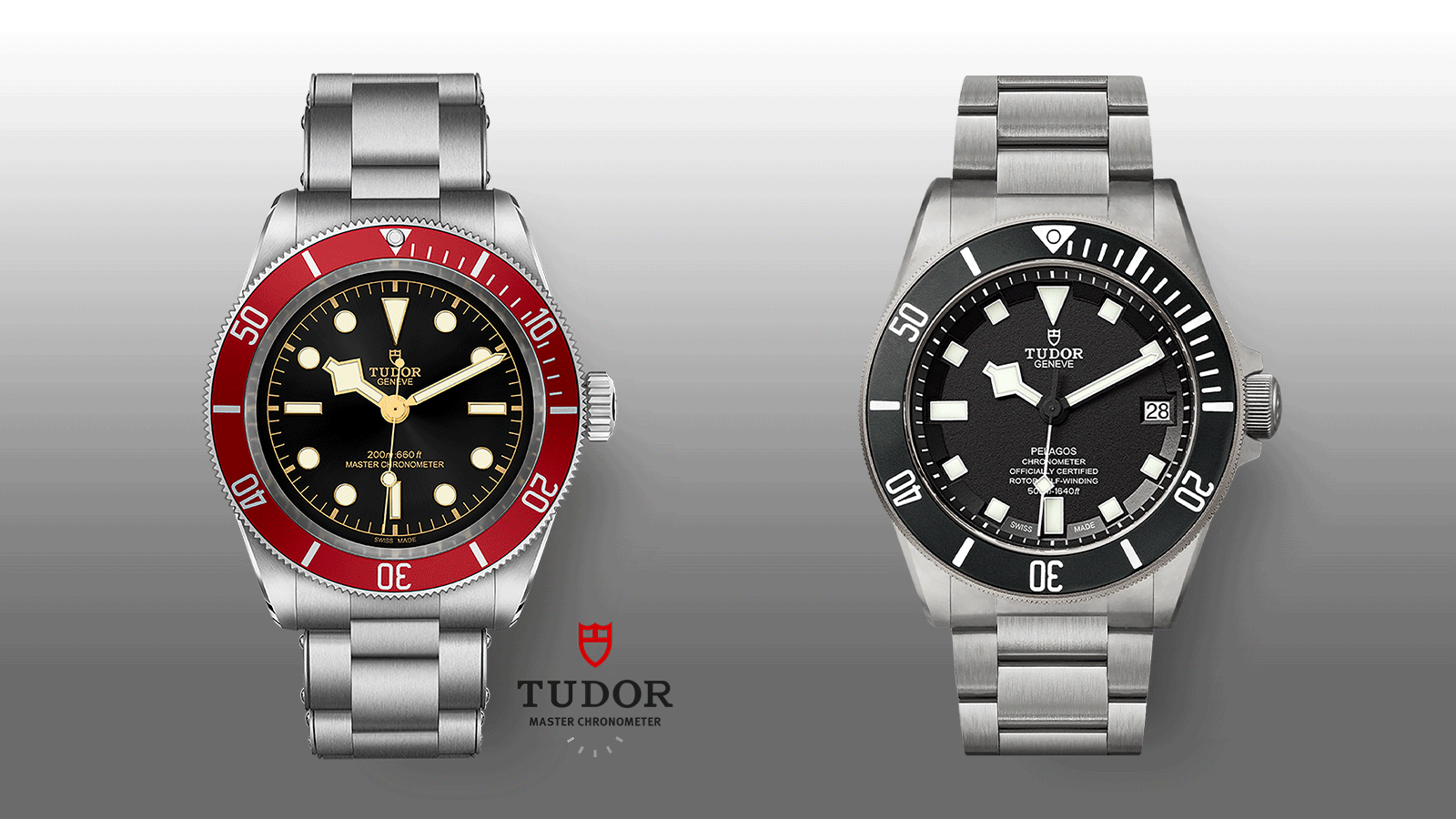
Case
The Tudor Black Bay is presented in a round steel case, measuring a comfortable 41mm, and is rated waterproof to a respectable 200 m / 660 ft. The case shows both satin and polished finishes, with the TUDOR rose in relief on the stainless steel screw-down crown. The TUDOR Pelagos meanwhile is offered in a slightly larger 42mm case hewn from lightweight titanium. Designated as TUDOR’s ‘professional’ dive watch, it offers an impressive 500m of water resistance and features an automatic helium escape valve, making it suitable for saturation diving (should that ever come up). The TUDOR logo appears in relief on the titanium winding crown, which is protected by pointy crown guards. The case shows a more muted satin finish, which is very in keeping with the tool watch aesthetic. Whilst cutting very different figures on the wrist, both are exceedingly comfortable and well-suited to all-day wear.

Dial And Bezel
Both the TUDOR Black Bay and TUDOR Pelagos feature black dials (the Pelagos also comes in a blue dial version), a colour historically chosen for dive watches due to the high level of contrast it offers. As we touched on above, the dial design of the Black Bay is immediately familiar, having been largely unchanged for the better part of 70 years. At 12 o’clock there’s a large, upside-down triangle, while around the dial are circular hour markers interspersed with rectangular – baton-shaped – markers at the 3, 6, and 9 positions. Around the periphery runs the minute track boarded by a complete circle. The coin-edge, unidirectionally rotating bezel with a 60-minute counter is made from steel and features an anodised aluminium insert – available in your choice of matt burgundy, matt blue, or matt black. Numerated for 10s, marked for 5s, and a second upside-down triangle, this time with a luminescent dot, to indicate 0/60. The time is shown via distinctive, square-shaped hands known by collectors as “snowflakes”. These uniquely styled, luminous hands have become a key part of the Black Bay’s identity, whilst also serving a functional purpose, ensuring optimal legibility in all conditions. The crystal protecting the black dial is still domed, but now it’s made from scratch-proof sapphire.
The dial of the Pelagos shares a similar layout, although it is executed in a decidedly more modern style. At 12 o’clock you will also find an upside-down triangle, however, the remaining hour markers are square (with the exception of 6 and 9 o’clock, which are rectangular). The date is shown via an aperture at 3 o’clock. All the indexes as well as the snowflake hands are in white for maximum contrast against the black (or blue) dial. Framing the dial is a unidirectional rotatable bezel in titanium, graduated over 60 minutes with a ceramic matt black disc complete with white luminescent graduations. As with the Black Bay, the dial of the Pelagos is protected by a domed sapphire crystal.
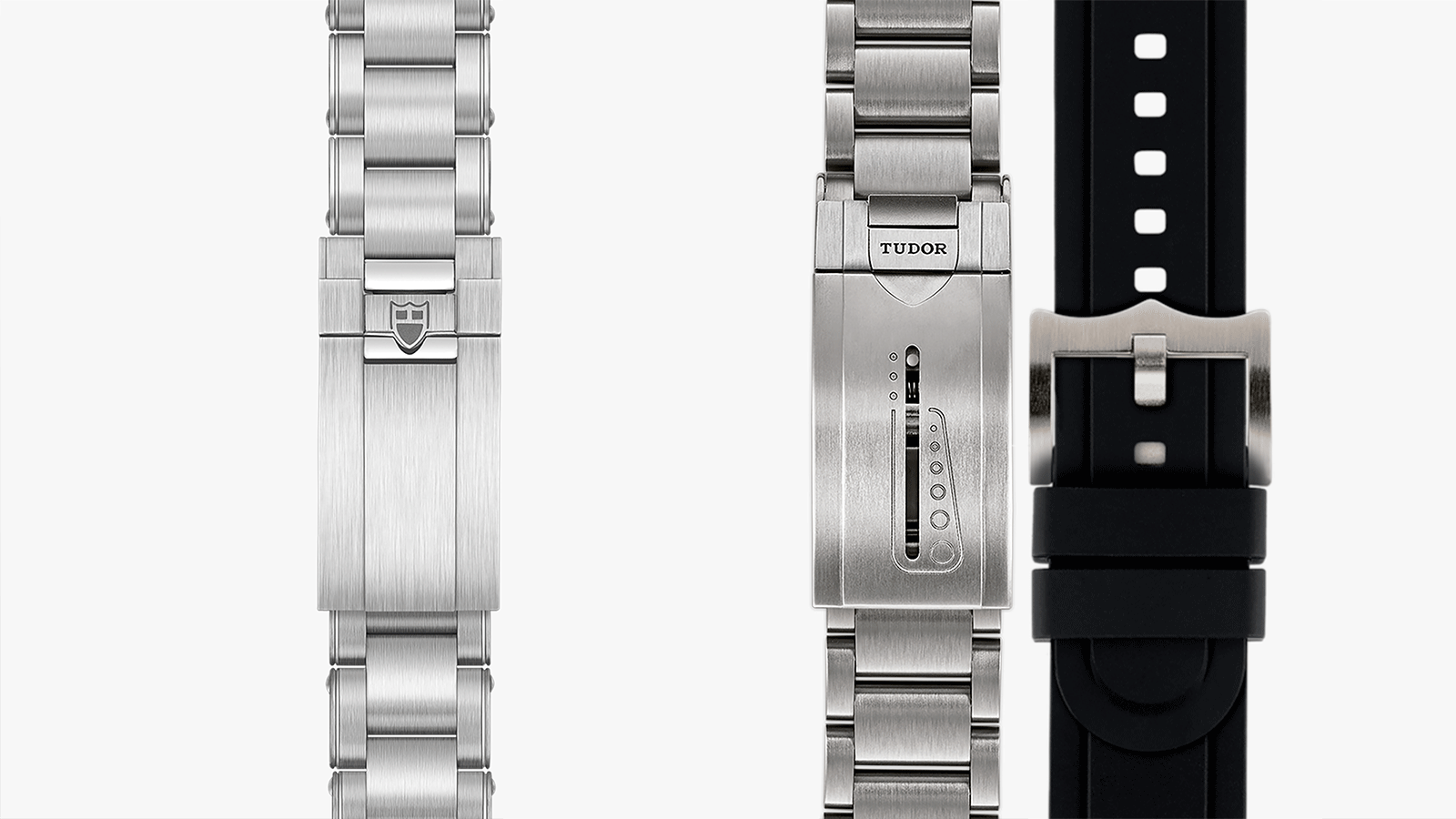
Bracelet
The Tudor Black Bay is available in several different bracelet/strap combinations. The steel bracelet variation closes with a folding buckle and safety clasp and show polished and satin finishes. Its design is inspired by the brand’s riveted bracelets from the 50s and 60s. All models also offer the choice of an aged leather strap with folding clasp. Or a fabric strap with buckle. It features a unique auto-adjustable spring mechanism developed and patented by Tudor.
Like its case, the bracelet of the Pelagos is also made of lightweight titanium and features a folding clasp and safety catch in steel with bracelet extension system developed and patented by TUDOR. This means the bracelet adjusts to suit the conditions when diving. So, it contracts when the diving suit is compressed at greater depths. And expands when the pressure decreases again during the diver’s ascent.
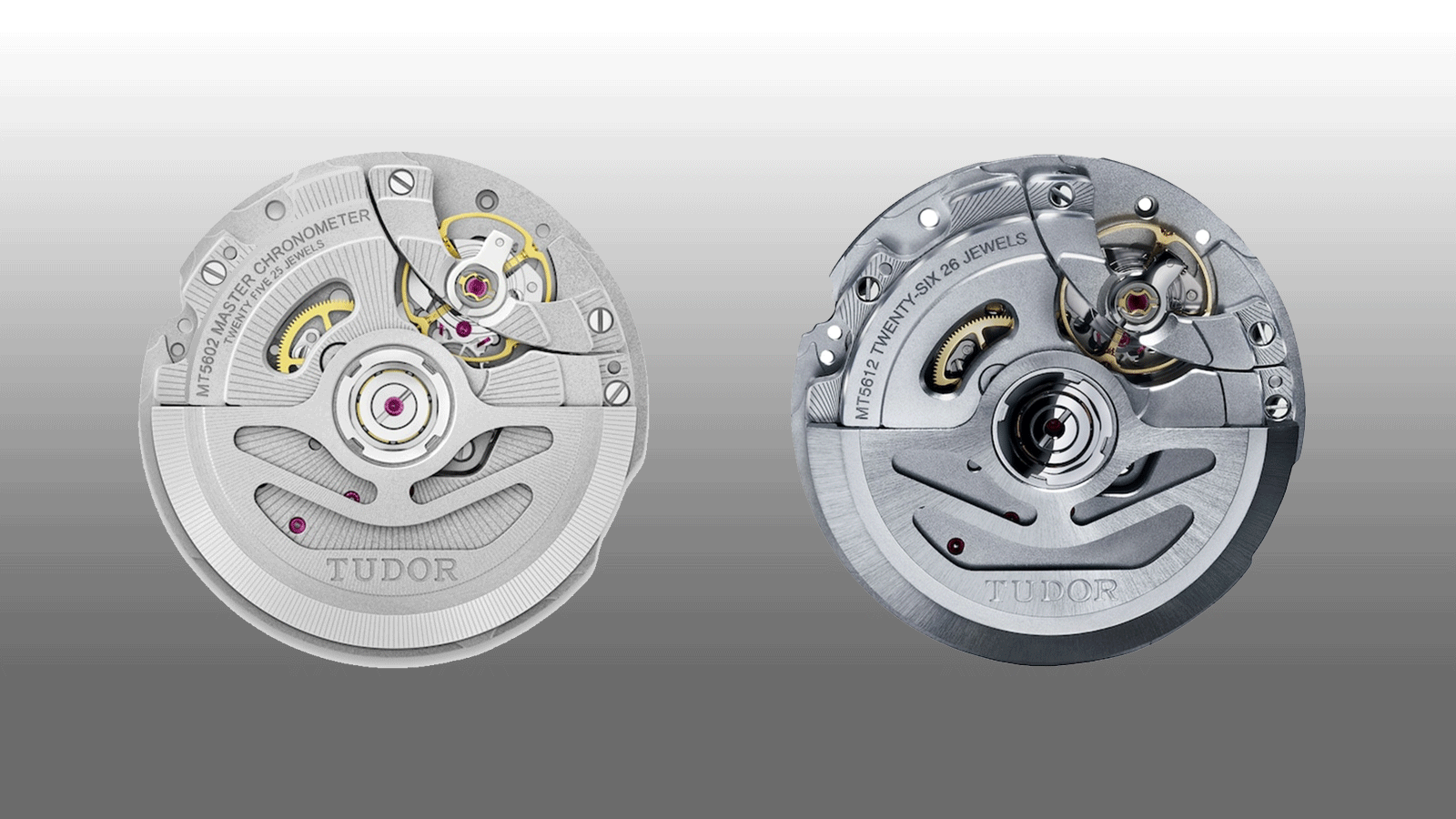
Movement
Powering the Black Bay is the self-winding Calibre MT5602, designed and manufactured in-house by TUDOR. Engineered to be a reliable and precise workhorse, a variable inertia oscillator with a silicon balance spring regulates the movement. It’s held in place by a traversing bridge fixed at both sides. This protects it against shocks and vibrations, thus helping to ensure a consistent rate of accuracy. Certified as a chronometer by the COSC (Contrôle Officiel Suisse des Chronomètres) it is accurate to -4/+6 seconds a day and offers an ample 70 hours of power reserve.
The TUDOR Pelagos offers comparable performance thanks to the self-winding Manufacture Calibre MT5612. It too is COSC certified as a chronometer and features a bidirectional rotor system to ensure that the 70-hour power reserve is kept well topped up.
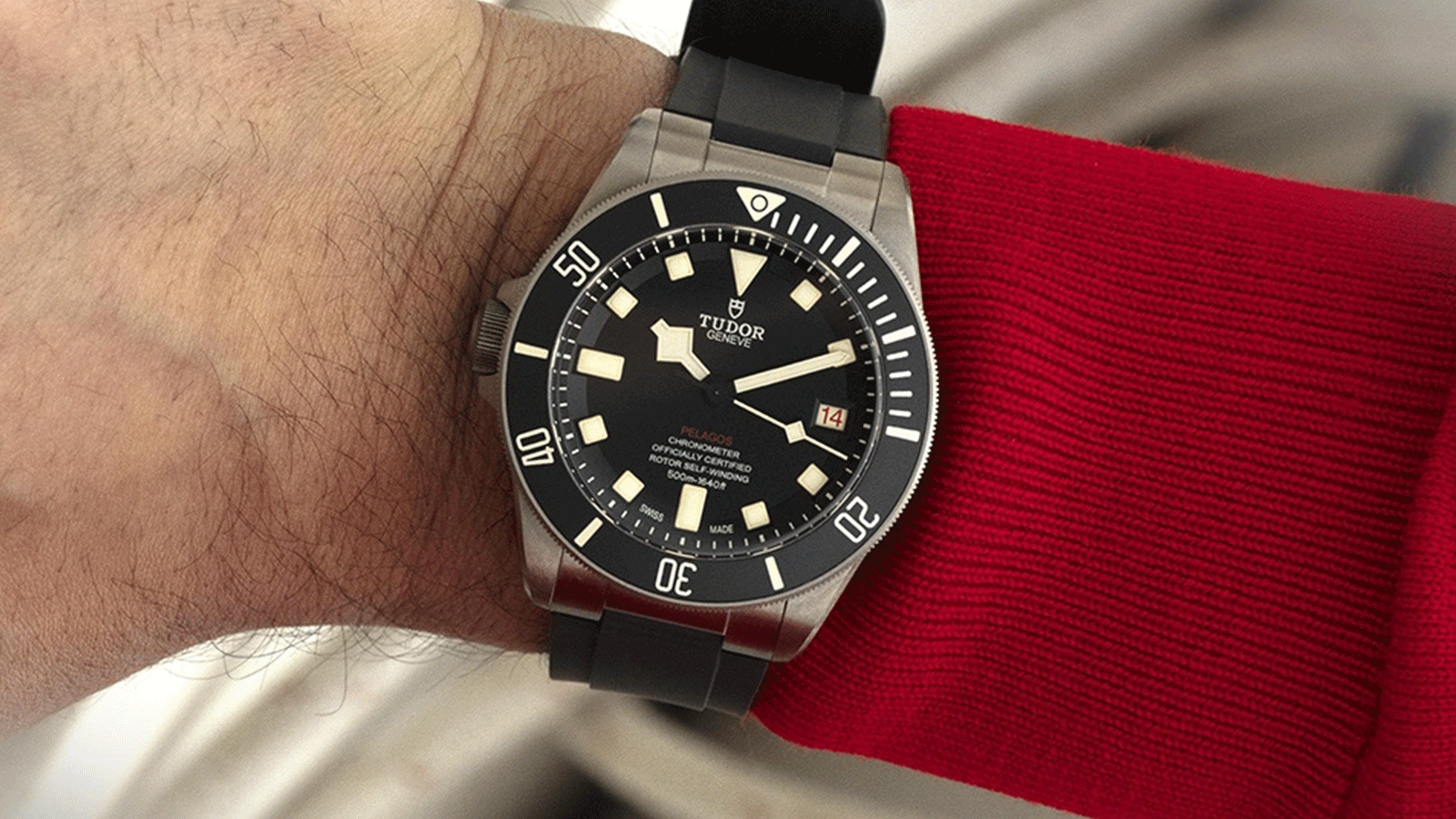
Making Your Choice
So, which is the TUDOR dive watch for you? Well, that all comes down to personal preference. Hopefully after having read our in-depth comparison, you’ve concluded that there is no wrong choice here. The Black Bay collection pays homage to the brand’s early dive watches, with a distinctive vintage aesthetic that is as ageless as it is appealing. The Pelagos meanwhile represents the culmination of years of developing watches for diving professionals. A utilitarian tool watch in every sense of the term, it is one of the most complete traditional mechanical divers’ watches available today. To help you make an even more informed decision, we invite you to book an appointment at your nearest Watches of Switzerland boutique for a personal overview of each collection delivered by a member of our highly trained and highly knowledgeable staff. You can also browse the full selection of TUDOR watches available on our website.








 Rolex
Rolex A. Lange & Söhne
A. Lange & Söhne Blancpain
Blancpain Breguet
Breguet Breitling
Breitling Cartier
Cartier Hublot
Hublot Vacheron Constantin
Vacheron Constantin IWC Schaffhausen
IWC Schaffhausen Jaeger-LeCoultre
Jaeger-LeCoultre OMEGA
OMEGA Panerai
Panerai Roger Dubuis
Roger Dubuis TAG Heuer
TAG Heuer Tudor
Tudor FOPE
FOPE Agresti
Agresti L’Épée 1839
L’Épée 1839



